by Shannon O’Leary
The second part of a two part series of email Q&A’s with some of the indepedent cartoonists working at Cartoon Network. There are so many of them who were so generous with their time and answers that we had to break their answers up into two posts! These Q&A’s were conducted as research for a Publisher’s Weekly article that spotlights the vast pool of indepent comics talent that’s currently rocking Cartoon Network’s world.
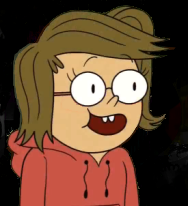
How did you come to work on The Regular Show?
JG (the show’s creator) asked if I would be interested in taking a storyboard test after he read some of my comics. I thought the name JG Quintel sounded suspiciously spam-like, but once I confirmed that it was the real deal, I was really excited about the opportunity. Some might say a little too excited. So I took the test and then I waited three long months before I got a call asking when I could start. I think it was about a month later that I went down to Burbank and started working as a storyboard artist/writer. I was pregnant the whole time I was working there and when the show went on hiatus last October, I decided to move back to Berkeley to give birth, etc. Much to my surprise, I got a call a few weeks later asking if I would be interested in doing the voice for the Eileen character since they had liked my voice so much in the pitch for “Do Me a Solid.” Obviously I was interested, so now I fly down to Burbank every month or two to record for Eileen.
How has your work in comics informed your work in animation and vice versa?
It’s hard to say how my work in comics has affected my work in animation since I never did any work in animation before I was doing comics. I’m sure the experience writing and drawing was useful, but I don’t think anyone would be hired to work in animation with zero background in either of those areas. I have definitely noticed a difference in how I approach comics now, though. I’m frustrated sometimes by the lack of movement allowed in them and find myself wanting to include things like camera directions and animation cues. My experience in animation has also made me very aware of how motivated I am by deadlines and accountability. The sheer quantity of work I completed at Regular Show amazes me now, and that experience makes it very hard to come up with good excuses about why it takes me so long to finish a comic.
What comics have you made in the past?
A collection of my minicomics called PS Comics was published by Secret Acres in 2009. I have also contributed to several anthologies and literary journals, including Papercutter, the Black Warrior Review (University of Alabama), and Devil’s Lake (University of Wisconsin – Madison). You can see my work and find more details at pscomics.com.
What comics are you working on right now?
Right now I’m working on a serialized story called Salad Days.
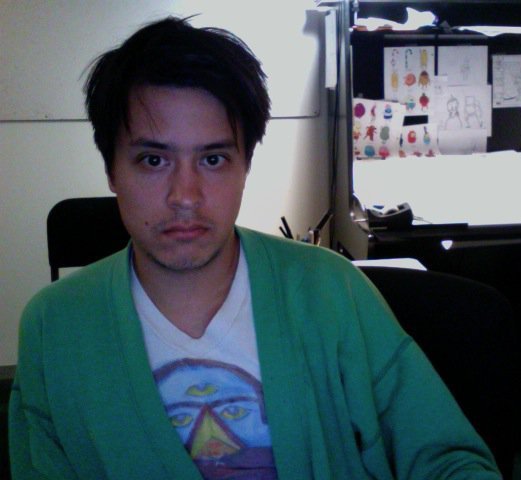
How did you come to work on Adventure Time?
I was selling my comics at the Small Press Expo in Bethesda Maryland 2 years ago; staring into the glowing wall of the convention center, when Pen Ward bought my comics. I didn’t know him. He saw that I thanked Tom Herpich in one of my comics. Tom and I were long time comics pen pals. Tom was designing on the show. Tom gave me a hearty recommendation. Pen asked me if I would move across the country to work on A.T.. I was purposely unemployed (focusing on art). My girlfriend had left me and I was going insane. I agreed to move to Los Angeles. 6 months of uncertainty later and I was working on the show!
How does your work in comics inform your work in animation and vice versa?
My work is only informed by comics. I have no substantial understanding of animation or the discipline of being an animator… athough working on this show for the past year and 1/2 has helped me approach image making in new and necessary ways. I’ve had really great teachers here (Cole Sanchez in particular). I really like the movie Light Years (aka Gandahar) by René Laloux. So that informs me. René Laloux informs me.
What comics have you made in the past?
Forming Volume 1 (Nobrow), Follow Me (Bodega), The Backwards Folding Mirror (self published). I ran a strip called Kime Agine in the Philly Weekly for a year and 1/2. Also I’ve had comics in MOME, Vice (web), the Believer, Arthur (web), Meathaus, Taffy Hips, and Canicola. The past 3 years have mostly been dedicated to serializing Forming on my website www.jessemoynihan.com
What comics are you working on right now?
Working on Forming Volume 2! You can find most of my stuff at www.jessemoynihan.com.
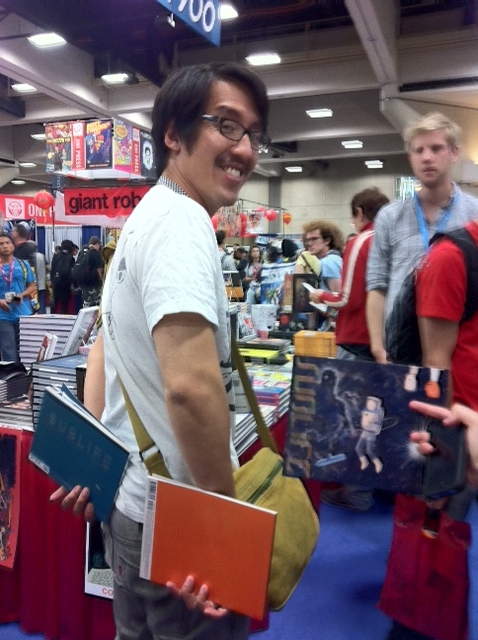
How did you come to work on The Problem Solverz?
Ben contacted me out of the blue; I may have been recommended by a mutual friend. But he was a little familiar with my work (we had met once on a book tour for Kramers Ergot) and thought I’d be a good fit for the show.
How does your work in comics inform your work in animation and vice versa?
Practically speaking, the only real skill I could apply was my drawing and design ability. I’d never worked in animation or in Flash before. But I think because you have to be versatile and adaptable to make comics, I was prepared to learn a lot of this stuff fresh and not panic or freak out. Conversely, working in television has taught me to work well and efficiently under pressure; no matter how little time you’ve got, work still has to get done and problems still need solving (harhar). I think I’d gotten used to taking too much time making comics.
What comics have you made?
I began with a series called Epoxy, that was self-published for 3 issues. I’m currently working on Sublife for Fantagraphics, and that is on its 2nd volume. I also had work in their anthology MOME.
What comics are you working on now?
I’m currently still working on Sublife, as well as painting and other small run self published work on my Risograph. My website is www.substitutelife.com.
Andy Ristaino (Lead Character Designer, Adventure Time)
How did you come to work on Adventure Time?
I had seen the pilot online and thought it was pretty amazing. About a year later I heard a friend of mine I met through comics Thomas Herpich had gotten a job of the show doing character design. I immediately emailed him and asked if I he could tell me whenever there was an opening on the show. Over the course of a few months I took a storyboard test and a character design test. I landed the character design job and moved down to LA.
How does your work in comics inform your work in animation and vice versa?
I work as a character designer in animation so I think the main crossover is the more I draw the better I am at both jobs. Things I worked on in my comics like creating believable spaces for characters to walk around in and creating solid and realistic looking items for them to interact with have definitely come in handy when creating solid looking props and effects.
What comics have you made in the past?
Escape from Dullsville and the Babysitter for SLG comics. Popgun vol. 4, Meathaus S.O.S., Pet Noir, Tales of Hot Rod Horror vol. 1, Spark Generators vol. 2, and Nickelodeon Magazine. I have self published a series of zines titled Skronked and a sketchbook Night of the Living Vidiots.
What comics are you working on right now?
I am currently working on 3 graphic novels. A collection of short form humor stories most of which have been published in anthologies with the working title Blunderbus. a collection of my far side like one panel gag comics called Skronked, and a collection of horror stories. website; http://skronked.com.
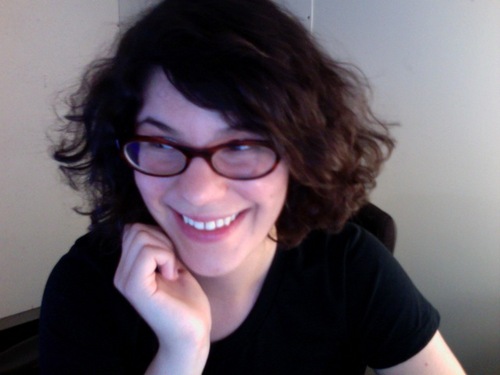
How did you come to work on Adventure Time?
Pen had seen some of my films and comics, so he sent me a storyboard test!
How does your work in comics inform your work in animation and vice versa?
Comics really taught me to think of drawing and writing as being totally interconnected. Since the boarders write the dialogue for Adventure Time episodes as they draw it, the writing and visuals are really married from the beginning. If the story outline we’re handed isn’t working as it’s being drawn we get to change it too. I never thought I’d get that kind of creative control with anything but comics so this is really an amazing job for a comic artist to have.
What comics have you made?
I made a comic called Pug Davis (www.pugdavis.com) which Eric Powell published through Albatross Exploding Funny Books. I also did a short comic called “Don’t Cry For Me, I’m Already Dead” about brothers who always quote the Simpsons. I’m going to put that back online some time soon. I also (recently) made a small zine with drawings of dancers.
What comics are you working on right now?
I’m currently working on a sort of scary romance comic called “Margo” or maybe “Take Me Back,” it’s a long book so it’s taking me a while on the side of work. I used a lot of ideas from it in “Fionna and Cake.” I also have a blog at rebeccasugar.tumblr.com where I put up personal work and some behind the scenes Adventure Time stuff.
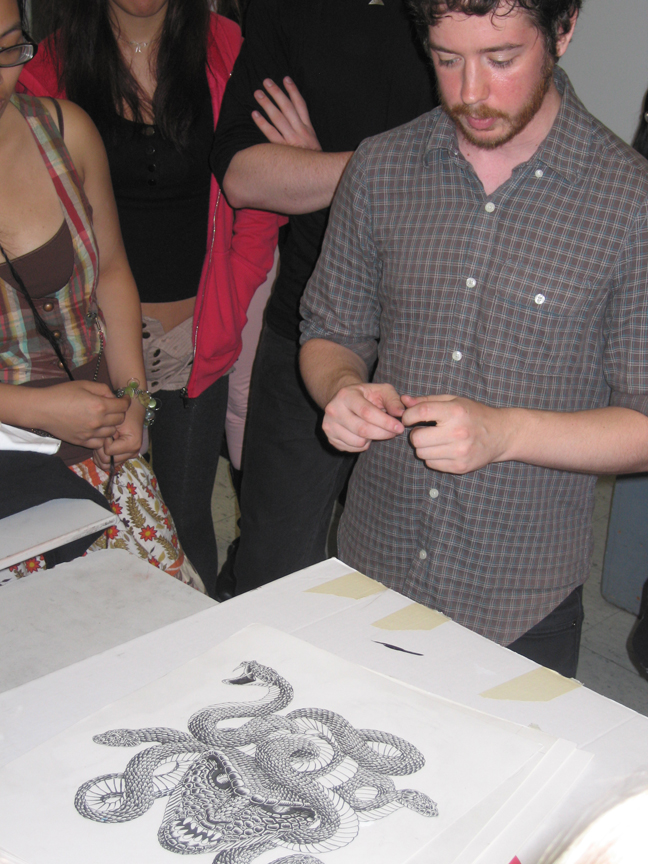
How did you come to work on The Problem Solverz?
I was doing some freelance work for Secret Mountain Fort Awesome and Ben Jones invited me to do some work for his show as well. I already knew Ben from working at PictureBox Inc. and was very familiar with his work. I think this helped a lot when I was first starting out. The show’s style (was) difficult to reproduce and (got) more sophisticated as it (matured).
How does your work in comics inform your work in animation and vice versa?
Designing the backgrounds for The Problem Solverz forced me to take closer notice of the environments around me. Even though rooms are generally the same shape, small details really sell how believable a space it is. I think this is good practice for comics and drawing in general.
What comics have you made in the past?
I’ve been published in a couple Fantagraphics anthologies such as MOME and have made silkscreen books and newsprint comics with Koyama Press. I’ve also been published in Marvel Strange Tales and The Simpsons Tree House of Horror.
What comics are you working on now?
I’m currently working on some comic projects which I’d like to get published in the next year.
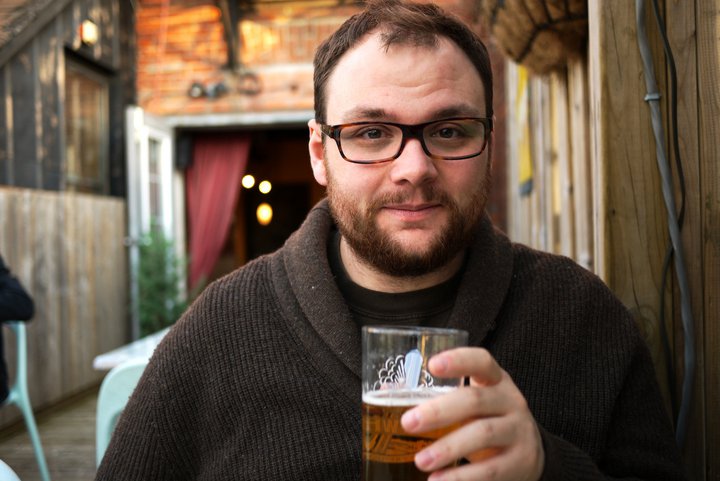
How did you come to work on Adventure Time?
I met Pen Ward at the Small Press Expo in Maryland a couple of years back. He was hanging out with a lot of different cartoonists and doing jam comics. I thought he was brilliant and really cool. He liked some of the comics that I was doing and asked me to do a story-boarding test for him. I was stubborn and didn’t want to move to Los Angeles back then. Now I’m doing freelance from Toronto.
How does your work in comics inform your work in animation and vice versa?
Animation has for sure helped me with character posing, expressions and visual communication in general. Also end up treating my comics like storyboards sometimes; lots of characters moving through static “shots.” I think in turn my story-boarding is more illustrative than it was before I did comics.
What comics have you made in the past?
Cat Rackham comics, mostly! He’s a depressed cat who lives in the woods and wears a t-shirt: http://catrackham.com/ I just published “Cat Rackham Loses It!” with Koyama Press in Toronto. http://koyamapress.com/
What comics are you working on right now?
I’m drawing more Cat Rackham, posting miscelaneous comics and drawings on my blog http://www.stevewolfhard.com/ and I hope to finish my Squirrel Family Tree soon http://www.catrackham.com/squirrelfamilytree.html
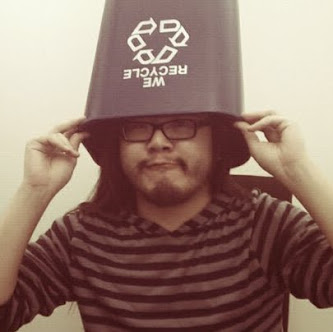
How did you come to work on Regular Show?
JG Quintel found my minicomic at the Sparkplug Comics table at SDCC 2009 and sent me a storyboard test.
How does your work in comics inform your work in animation and vice versa?
Comics informing animation: Storyboarding on Regular Show is primarily a writing job, and making my own minicomics helped a lot with that aspect of it. From what I’ve seen in so far in the animation industry so far, there are a lot of people who can draw but can’t write, or can write but can’t draw– you have to have both skills to thrive in comics. I think that was one of the reasons creators like JG or Pen Ward are looking carefully at the minicomics scene for talent.
Thematically my comics have always been about normal people reacting to outlandish situations and cracking one liners and Regular Show is all about that. That gave me a leg up I’m sure.
Also the show is very lo fi. We don’t use Cintiqs on Regular Show. The tools of the trade here are pencils, pens, white out and post its– pretty similar to what I was used to using in comics. Actually the most high tech thing we have here are light tables and electric erasers.
Animation informing comics: In my day to day job, my drawing is simplified and loose. Storyboards only resemble comics superficially. There’s a push for the drawings to be functional more than beautiful. The board probably goes through hundreds of people (directors, execs, designers, animators) before being released to the general public and as you can imagine your vision can change a lot along the way. So if your drawing is clear from the beginning and not bogged down in detail you can’t get hurt when it’s diluted later. In my comics lately I’ve been more focused on clarity and staging.
My comics process has become more practical also. I’ve started focusing more on how the end product will look rather than doing things traditionally — you know, using cheap typing paper, pasting in panels over messed up ones, using the light table and tracing more. For Papercutter, I allowed myself to make A LOT of mistakes. Before stuff like that would make me frustrated. The time constraints of animation have really allowed me to tackle those problems in a more efficient manner.
What comics have you made in the past?
Minicomics Hattie and Millie, Ramble On!, Automat 1, 2, Anthologies: Lavapunch #2 edited by Jillian Ogle, I Saw You edited by Juila Wertz, Papercutter #17 edited by Greg Means
What comics are you working on right now?
I’m working on the next “Ramble ON!” whenever I get the chance!



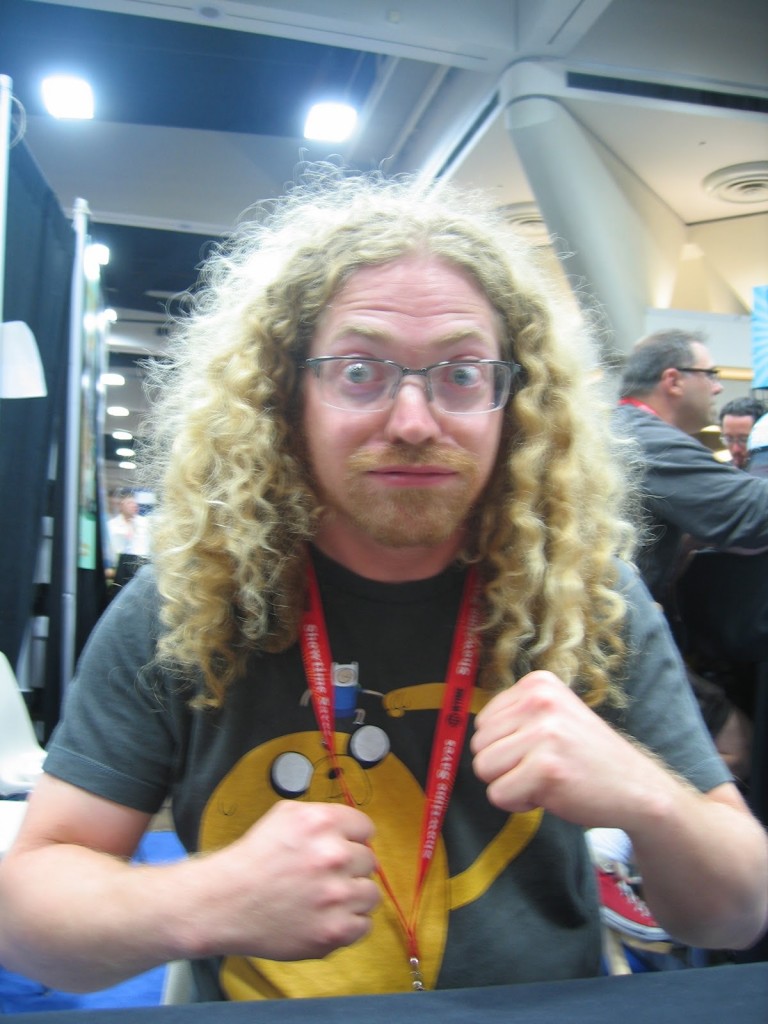
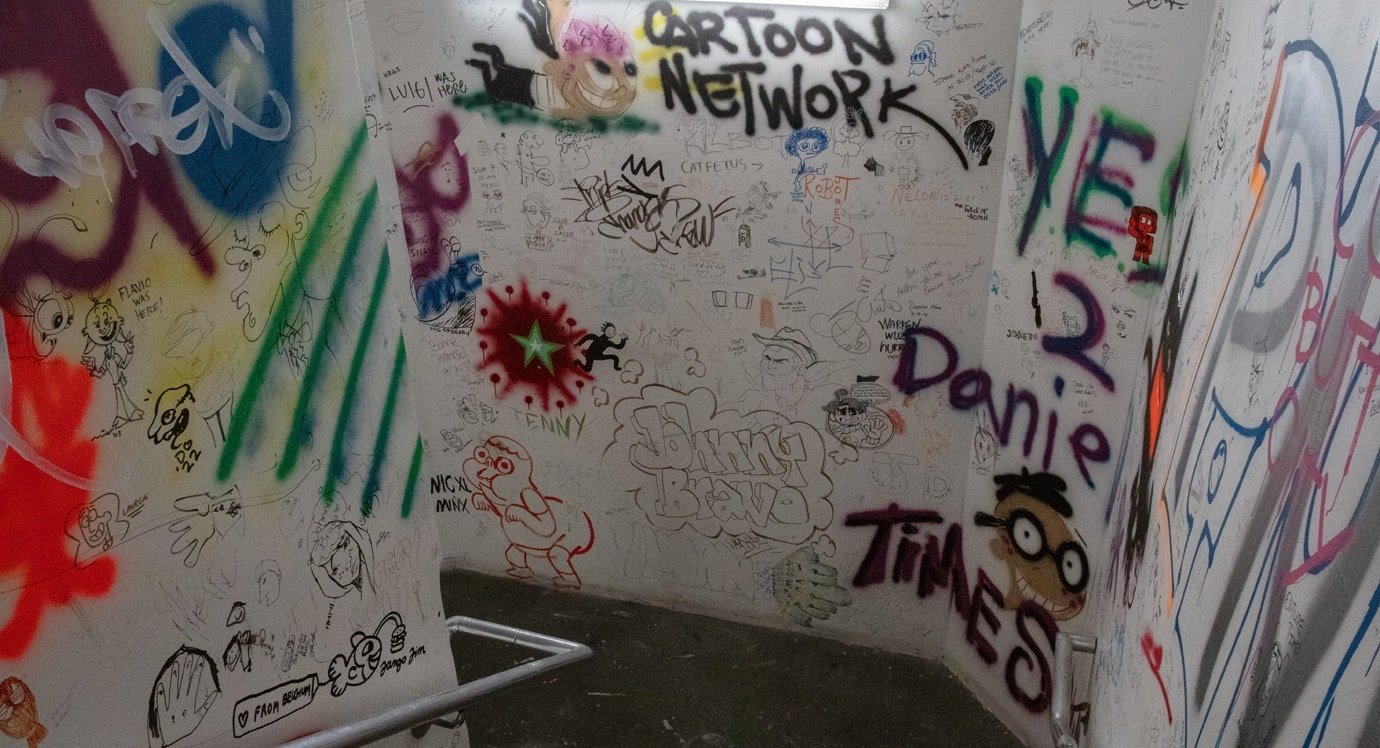
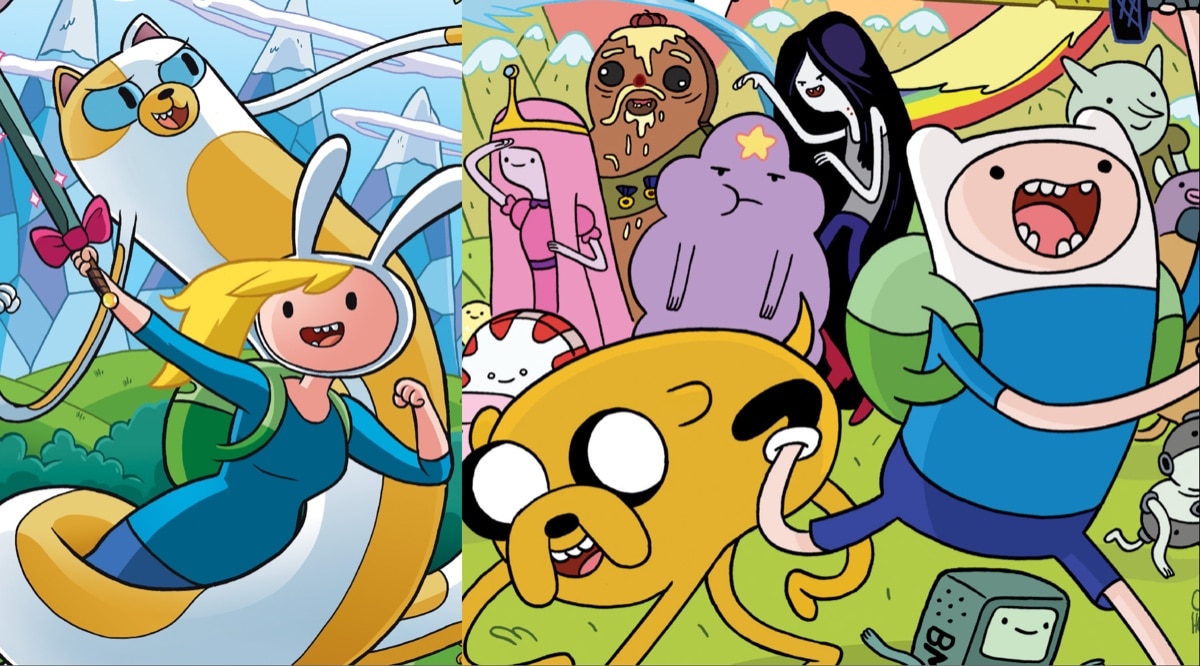
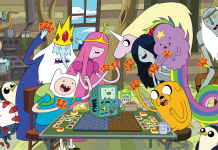
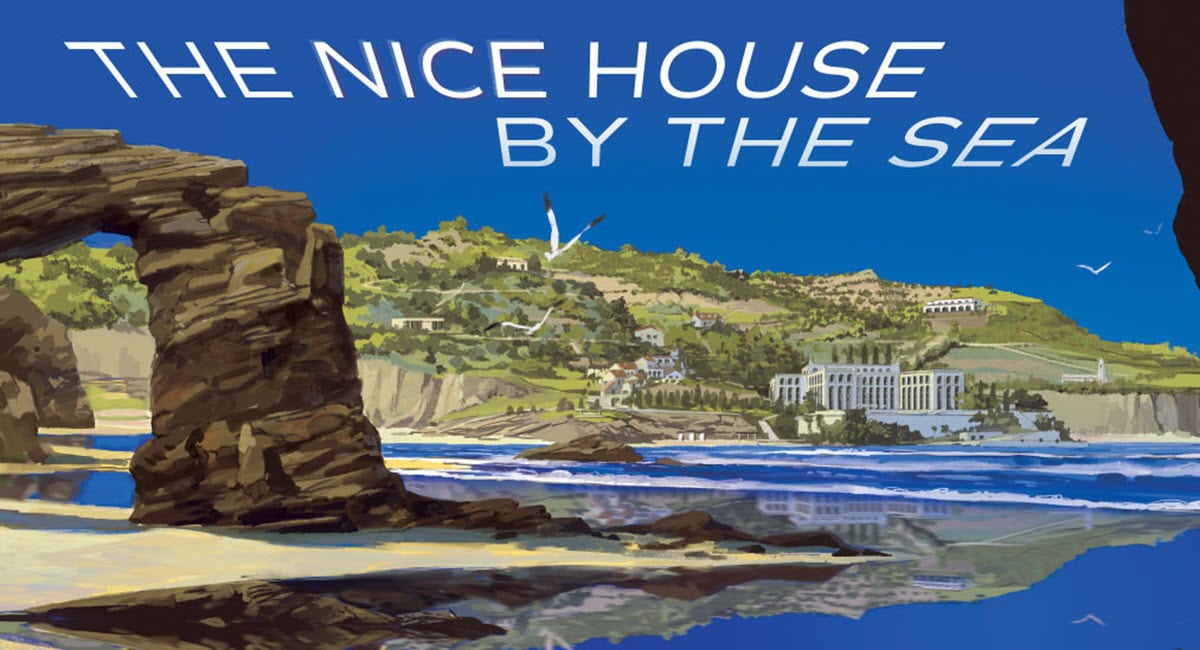



I love every single one of these people.